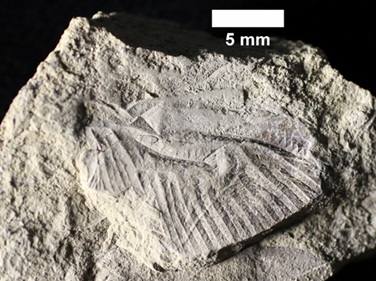| (Preliminary Exam: Current Affairs) |
Reference
Recently, a fossil of a dragonfly from the Cretaceous Period has been found in Dinosaur Provincial Park in Alberta, Canada. This is the first dragonfly fossil found in dinosaur-era rocks in Canada.

Recent discovery of dragonfly fossil
- Publication: The study was published in the Canadian Journal of Earth Sciences.
- About the discovery: In the year 2023, this fossil was discovered during a field study by McGill University.
- Age: This fossil was found in the Dinosaur Park Formation, which is 75 million years old.
- New species: This fossil was identified as a new species and named Cordualadensa acorni.
- Naming: It was named in honour of University of Alberta entomologist John Acorn, who promoted Alberta's natural heritage.
- New family: Its unique anatomy also led to the creation of a new family, Cordualadensidae.
|
Know this too!
The "Dinosaur Age", or Mesozoic Era, spanned from about 252 million to 66 million years ago, covering the Triassic, Jurassic and Cretaceous periods. Dinosaurs first appeared in the Triassic period and dominated the Earth for more than 165 million years. They became extinct at the end of the Cretaceous period, 66 million years ago, possibly due to a mass extinction event caused by a meteorite impact.
|
Significance of the discovery
- This discovery fills a 30 million year gap in the evolution of dragonflies.
- This fossil is the first species of the Cavilabiata group found in North America.
- It gives us new information about the environment of Canada 75 million years ago.
- This discovery doubles the insect history of Dinosaur Park, as previously only a fossil of a microscopic Aphid was found.
- It also represents a new preservation method called Impression Fossils.
- The method of preservation of impression fossils comes under compression, where soft tissues and organic matter of the organism are destroyed due to high pressure, and only a flat impression or pressed mark is left on the rock.
About Dragonfly
- The scientific name of dragonfly is Odonata.
- It is part of the Cavilabiata order.
- There are two main types of dragonflies:
- True Dragonflies: Large wings and strong flight.
- Damselflies: Thin bodies and delicate wings.
Features
- Dragonflies have very large eyes and can see almost 360°.
- They have two pairs of wings, with the help of which they can fly very fast.
- They live near water sources like ponds, lakes and rivers because their larvae thrive in water.
Role in the environment
- Dragonflies maintain the balance of the environment by eating mosquitoes and other small insects.
- They are an important part of the food chain and are also a source of food for birds and fish.
Challenges
- Climate change and pollution of water sources are endangering dragonfly species.
- Deforestation and urbanisation are destroying their habitats.
Way forward
- Protecting water resources and natural habitats is essential to safeguard biodiversity.
- Scientific research and fossil discovery will help us understand the evolution of the earth and environmental changes better.
- Protecting species like dragonflies is vital to maintain ecological balance.


